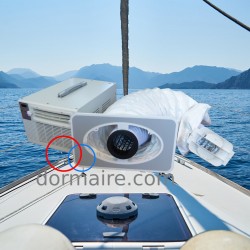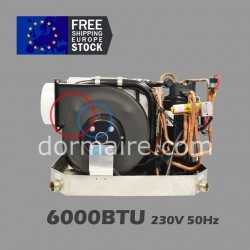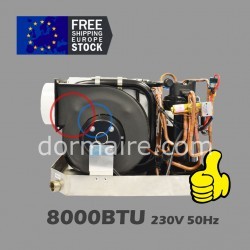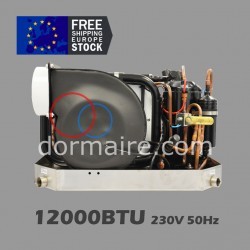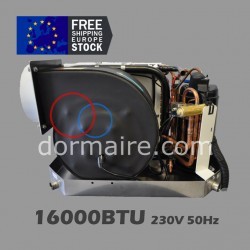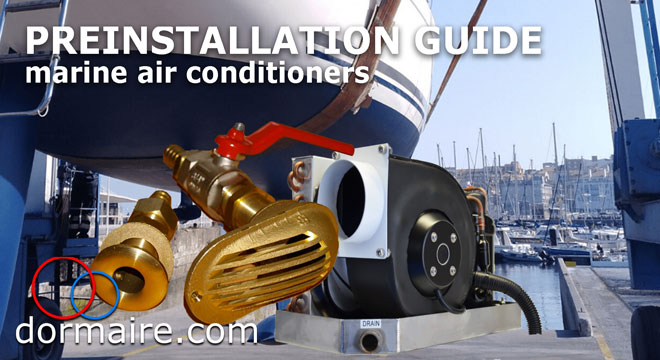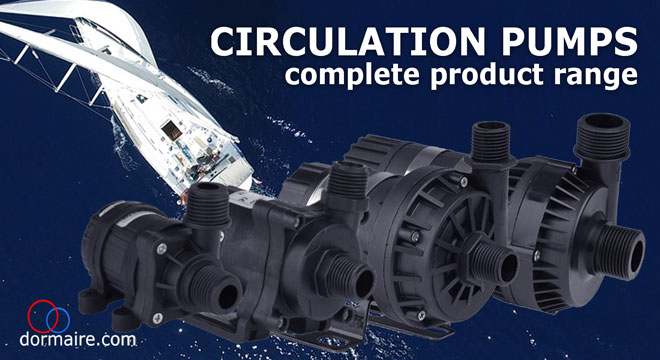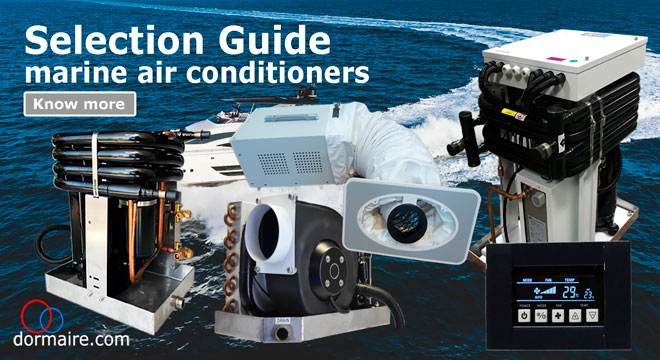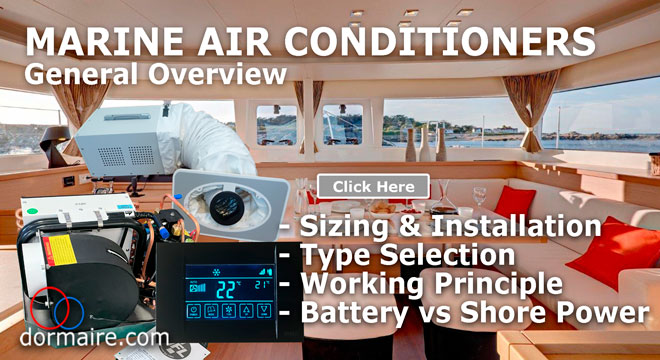HOW TO CHOOSE THE BEST MARINE AIR CONDITIONER
Choosing the right air conditioner for your boat is essential to achieve the desired comfort at a minimum cost, while ensuring the durability of the equipment. Here is a guide to the fundamental aspects you need to know in order to be satisfied with your choice.
The most critical points that will make you feel you have made the right decision are:
- Noise level
- Adequate power
- Purchase and installation cost
- Space requirements
- Type of power supply available - 110, 230Vac (50/60Hz) o 12V
- Spare parts availability and after-sales service
The above aspects shall be related to the following equipment characteristics:
TYPE OF EQUIPMENT
There are different types of equipment on the market. Each has its advantages and disadvantages depending on the type of boat and the use you make of it.
PORTABLE SYSTEM FOR HATCH OR PORTLIGHT
These are very low-cost units and do not require installation. They are real air conditioners with a refrigeration compressor, but have a very reduced power in accordance with their size, so they are only suitable for cooling one cabin. They are ideal for single sailors or couples who usually spend the day sailing and occasionally spend the night on board. They are air-cooled, so no seawater pumps are required. They have the advantage of not needing installation and can be moved from one ship to another, but are not practical when several rooms need to be cooled.
SELF CONTAINED SYSTEMS
They are the most suitable units for most applications. Technical progress has meant that the noise level of the new refrigerant gas rotary compressors has been greatly reduced. Their size has also been greatly reduced. They are easy to install because they are pre-charged with refrigerant gas at the factory and do not require the installation of gas pipes. In recent years their price has also been greatly reduced, and they provide adequate power for the most common lengths. From 23 to 50 or 60 feet.
SPLIT SYSTEMS
They can be considered a relic of the past. In the past, refrigeration compressors were of the reciprocating type and made a lot of noise, so they could not be installed inside the ship. For the equipment to make an acceptable noise, it had to be "split" into 2 units. The noisy condensing unit was placed in a soundproofed space in the engine room, and the evaporator unit with its fan was placed inside. They were difficult to install because they required 2 spaces and it was necessary for a refrigeration specialist to interconnect the 2 parts of the machine with welded pipes and charge the refrigerant gas. These types of condensing units and the gas piping network easily fail because they are often located in spaces with a very corrosive saline environment. Nowadays, when one of these units breaks down, it is most practical to replace it with a compact unit, as the size of modern self-contained units is approximately the same as that of the old evaporators that were installed indoors.
CHILLER SYSTEMS
It is often the only possible option for boats of 50 or 60 feet and above. They work in a similar way to how central heating works in a house. A condensing unit is installed in the boat's engine room to cool water that will then circulate through a network of water pipes, passing through the cooling units (fan coils) placed in each of the air-conditioned rooms. It is a system with a higher acquisition cost, but capable of providing a very high level of comfort.
WHAT SIZE MARINE AIR CONDITIONER? HOW MANY BTU DO I NEED TO COOL MY BOAT? HOW DO YOU SIZE A MARINE AIR CONDITIONER?
You can find in Internet a number of complicated formulas to size your new air conditioner, but we prefer easy examples based on boat type and size. We offer a wide range of air conditioners adequate for any boat size. You can browse in our website for our recommendations or send us a message stating boat model and sailing area. We will reply promptly with our customized recommendation for you.
2000 BTU portable marine air conditioner suitable for SMALL CABINS:
- Small cabins in power or sailing boats up to 35'
3500 BTU marine air conditioner suitable for SMALL BOATS:
- Small cabins with ensuite bathroom
- Cuddy cabin boats
6000 BTU marine air conditioner suitable for:
 - Sport power boats up to 25'
- Sport power boats up to 25'
- Sail boats up to 28'
- 2 normal size cabins (without ensuite bathroom)
- 1 big cabin with en suite bathroom and work area
8000 BTU marine air conditioner suitable for:
 - Sport power boats up to 32'
- Sport power boats up to 32'
- Power boats up to 26' (pilothouse with big windows)
- Sail boats up to 32'
- 2 cabins without ensuite bathrooms
- Saloons in sailboats up to 38' (saloon only)
12000 BTU marine air conditioner suitable for:
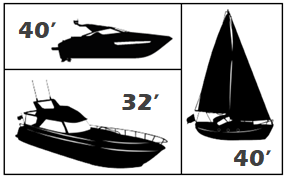 - Speed boats up to 40' (saloon under deck and without windows)
- Speed boats up to 40' (saloon under deck and without windows)
- Power boats up to 32' (pilothouse with big windows)
- Sail boats up to 40'
- Saloons with large windows in power boats up to 46' (saloon only)
16000 BTU marine air conditioner suitable for:
 - Sport power boats up to 45' (saloon under deck without windows)
- Sport power boats up to 45' (saloon under deck without windows)
- Power boats up to 40' (pilothouse with big windows)
- Sail boats up to 45'
- Saloons in catamarans up to 46' (saloon only)
COMPRESSOR TYPE
Due to the special importance of noise and vibrations, it is always recommended that the refrigeration compressor of the unit is of the rotary type. The main types are rotary and reciprocating. It is easy to distinguish between them because the rotary compressor is narrow and tall cylindrical, but the (noisier) reciprocating compressors have less height and are more convex.
COOLING AND HEAT PUMP FUNCTION
The cost of the units does not vary much, and the cost of the installation is exactly the same, so the reversible type with heat pump is always more recommendable, so that you can also enjoy it during the winter. In addition, heat pump heating is so efficient that it consumes about 3 times less energy than a conventional electric heater.
RESISTANCE TO THE MARINE ENVIRONMENT
It is absolutely essential to use top quality materials that are resistant to the marine environment. Some of the special features of the best marine equipment are the use of seawater condensers made of Cupro-Nickel (CuNi). This is the optimum material because it achieves excellent durability and also has good heat transfer properties. Other important elements are the condensate tray made of stainless steel (inox) or plastic materials and the cooling coils made of anodised aluminium, which can be distinguished by their characteristic blue colour.
TECHNICAL SERVICE AND SPARE PARTS AVAILABILITY
Air conditioning equipment for marine use has an acquisition cost which, although it has been greatly reduced in recent years, is still significant. It is essential to choose a supplier that ensures the availability of spare parts for the future. Be wary of non-specialised suppliers who offer air conditioners for all kinds of uses, as they are simply importers/resellers without the technical capacity to solve any problems that may arise, and do not have the necessary specialisation required by the nautical sports sector. At Dormaire we are specialists in marine air conditioning equipment. We reach a large number of customers, but we work with a very small range of items, so we control even the smallest of spare parts that you may need.
NEW OR USED
Many people consider buying second-hand equipment, as opposed to the higher cost of buying new equipment. There are 2 main reasons why buying used equipment is not advisable.
1- Compressor noise - As explained above, until not too many years ago, equipment used reciprocating compressors. These compressors are much noisier than today's compressors, and because of the loud noise level they cannot be used inside the boat. In many cases the noise of these old compressors was so high that the discomfort of the heat was almost preferable to the discomfort of the noise
.
2- Deterioration of the seawater heat exchanger - In recent years, in addition to the increased quality of materials and the use of CuproNickel alloys that are more resistant to corrosion, the way seawater heat exchangers are manufactured has also changed substantially. Older equipment used heat exchangers which, due to their construction, required numerous welds in the tube through which the seawater circulates. These welds were more susceptible to deterioration due to corrosion by seawater, so their durability was reduced. These seawater condensers are very specific spare parts for each unit and their replacement cost is high, so that in the event of a condenser failure it is usually preferable to replace the unit with a new one, rather than replacing it. Modern equipment uses coaxial condensers built from a single piece of tubing and without welding, so they are much more difficult to clog and much more durable.
Therefore, we always advise against the purchase of used equipment, because if it is still working, it is most likely near the end of its useful life, and even if it does work, it will be too noisy.
TYPE OF POWER SUPPLY
Although it may seem obvious, it is important to check that the equipment works with the type of electricity supply in the country where it will be used. In the case of boats with a genset, before deciding on one model or another, care should also be taken to choose the air conditioning power in accordance with the genset..
12-VOLT AIR CONDITIONING
Nowadays, where feasible, it is an increasingly common trend to install equipment that can be powered directly from the ship's batteries. Without the need for the port's electrical supply, and without the uncomfortable noise of the generator set. The purchase cost of this equipment is higher due to the high cost of the new technology used..
In order for an air conditioner to operate efficiently and thus achieve maximum comfort without wasting battery capacity, it must use an inverter compressor. These are compressors with a lower energy consumption than normal, but they also have a major difference compared to 220 volt compressors. Conventional compressors have a very high power consumption at start-up. After a few seconds this consumption is reduced to normal values, but these seconds are long enough to require a sufficiently powerful power supply to support this maximum power. However, modern inverter compressors have a progressive start-up, they accelerate gradually with an almost imperceptible noise and with a power consumption that is gradually rising.
Additionally, when the inverter air conditioner reaches the desired temperature, its compressor will reduce the power consumed.
This is how inverter air conditioners are designed and built.
This is how modern 12-volt DC units manage to increase their operating hours by making maximum use of battery capacity.
We are specialists in the field of air conditioning.
We are specialists in marine air conditioning. Can you let us advise you free of charge on the most suitable equipment for your case? Send us your enquiry by email to dormaire@dormaire.com indicating the boat model, and we will send you our personalized recommendations as soon as possible.
PRODUCT GUIDES
CLICK on the image to view the corresponding guide
PROFESSIONALS
In addition to private customers, we also attend inquiries from professionals.

